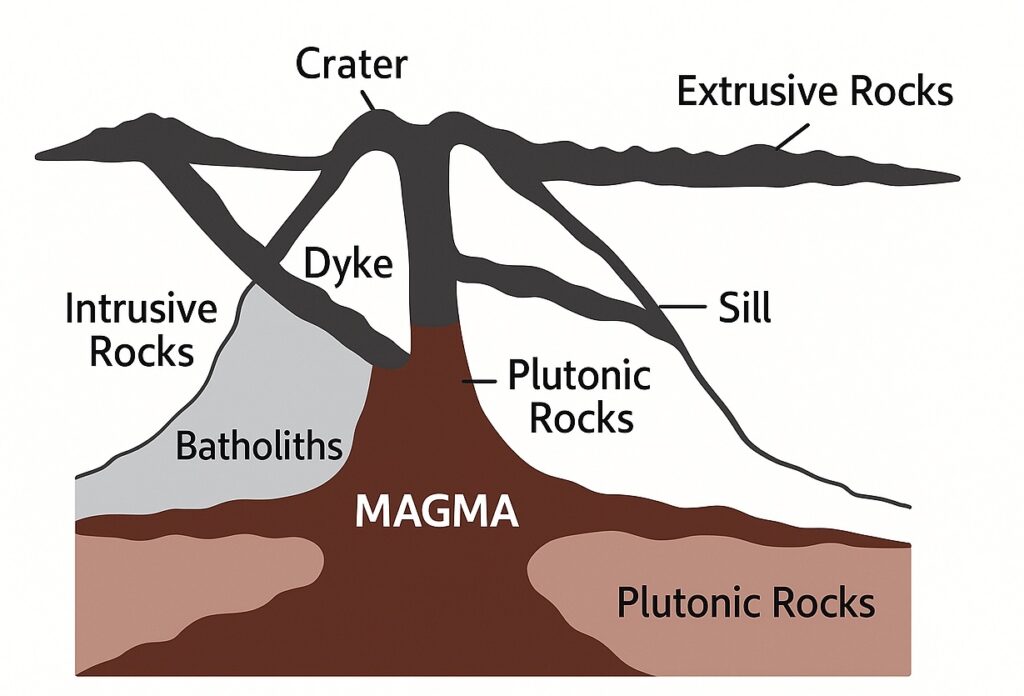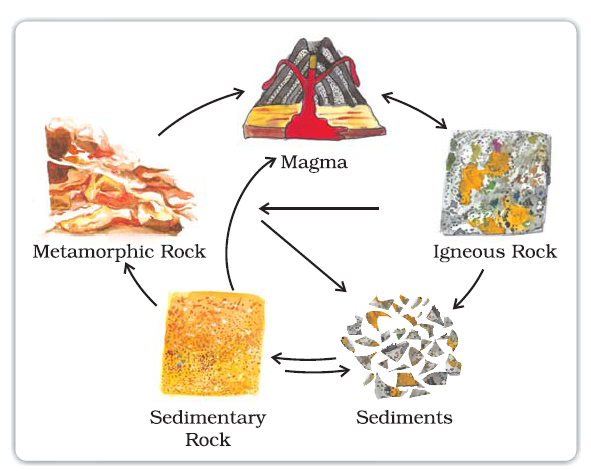Rocks are the fundamental building blocks of Earth’s crust, shaping landscapes and influencing natural processes. Rocks are naturally occurring solid substances composed of minerals, mineraloids, or organic materials. They are a fundamental component of the Earth’s crust and provide insights into the geological history and processes of our planet. Rocks can vary in size from tiny mineral grains to massive mountain ranges.
Table of Contents
What Are Rocks?
Rocks are naturally occurring, solid aggregates of one or more minerals or mineraloids. They form the Earth’s crust and are critical in shaping landforms like mountains, valleys, and plateaus. Rocks are classified into three main types based on their formation processes: igneous, sedimentary, and metamorphic. Each type plays a unique role in Earth’s dynamic systems.
Igneous Rocks
Igneous rocks form from the solidification and cooling of molten rock material, known as magma or lava. They can be classified into two main types:
-
- Intrusive (Plutonic) Igneous Rocks: These rocks form beneath the Earth’s surface as magma cools slowly. Examples include granite and diorite.
- Extrusive (Volcanic) Igneous Rocks: These rocks form on the Earth’s surface as lava cools rapidly. Examples include basalt and pumice.

- The word igneous comes from “ignis”, meaning fire.
- These rocks are made when hot molten material inside the Earth—called magma—cools and solidifies.
- Magma is like underground lava; when it erupts out of a volcano, it’s called lava.
- Igneous rocks dominate volcanic landscapes, such as the Deccan Plateau in India, formed by massive lava flows.
- They influence soil fertility, as basaltic rocks weather to produce nutrient-rich soils.
Why Are They So Special?
- Igneous rocks were the first rocks to form—that’s why they’re called primary rocks or the “parents” of all other rocks.
- Almost 95% of Earth’s outer 16 km is made up of these rocks.
- They’re usually hard, solid, and have a crystal-like appearance.
Sedimentary Rocks
Sedimentary rocks are formed through the accumulation and compaction of sediments, which can include fragments of preexisting rocks, minerals, organic matter, and chemical precipitates. They often preserve evidence of past environments and events. Examples include limestone, sandstone, and shale.
- Also called stratified rocks because of their layered look.
- Often have fossils—remains of plants or animals from ancient times.
- Found near Earth’s surface.
- Examples: Sandstone, Shale, Limestone, Dolomite
Sedimentary rocks are made from layers of tiny bits of old rocks, shells, plants, or animals.
These sediments are carried by:
-
- Rivers
- Glaciers
- Wind
- Ocean currents
Metamorphic Rocks
Metamorphic rocks are created from preexisting rocks (either igneous, sedimentary, or other metamorphic rocks) that undergo changes in response to high temperature, pressure, or chemically active fluids. These changes result in the formation of new minerals and textures. Examples include marble (from limestone) and schist (from shale or granite).
- These are “changed rocks”—they were once sedimentary or igneous, but transformed by:
- High heat
- Great pressure
- The change process is called metamorphism.
The Rock Cycle
The rock cycle is a continuous process that links the three rock types. Igneous rocks may weather into sediments, forming sedimentary rocks. These can be buried and transformed into metamorphic rocks under pressure. Metamorphic rocks may melt into magma, restarting the cycle. This dynamic process shapes Earth’s surface over millions of years, influencing landforms and ecosystems.

Conclusion
These three major rock classes are part of the rock cycle, which describes how rocks continuously change and transform from one type to another over geological time. The rock cycle involves processes such as weathering, erosion, sedimentation, heat and pressure, melting, and solidification. It plays a crucial role in shaping the Earth’s surface and maintaining geological diversity.